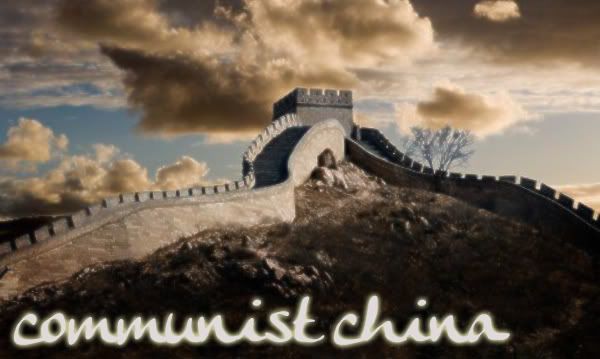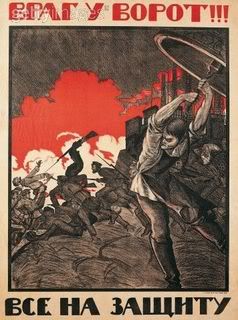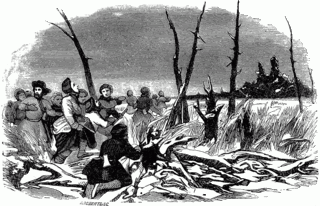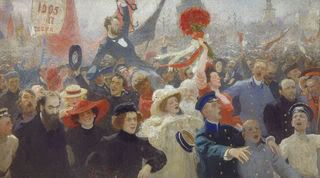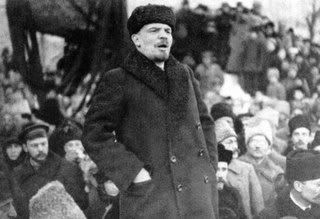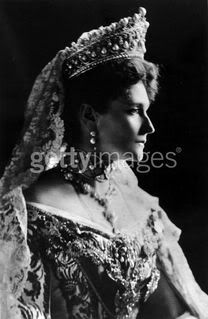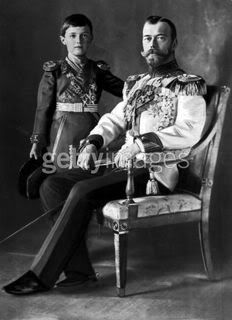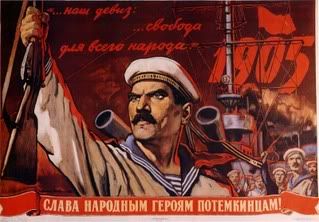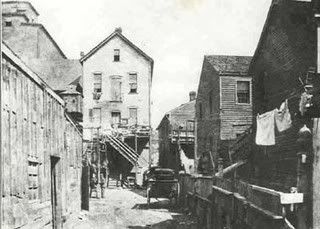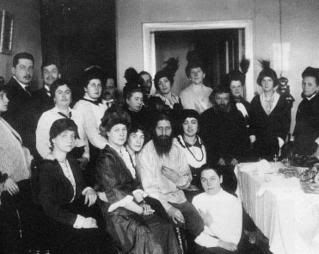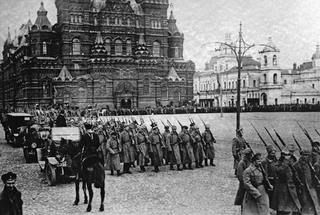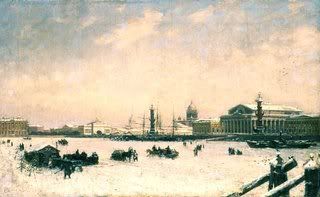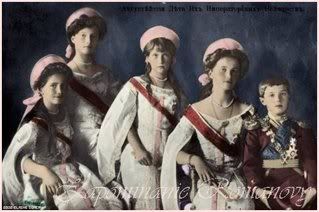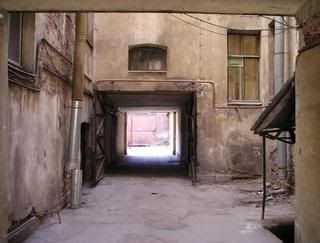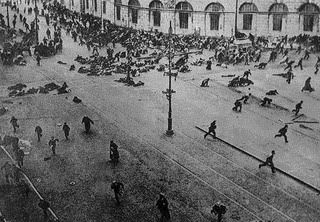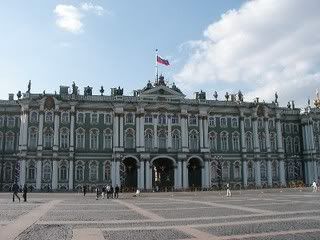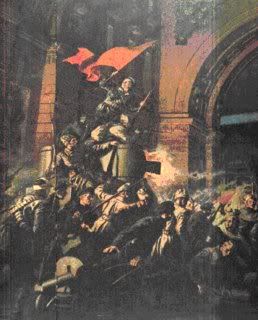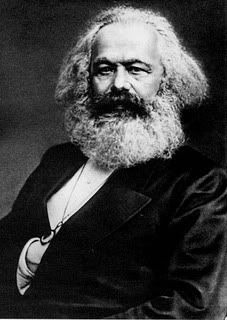Political Situation
Autocracy, with an absolute monarchy and close to a dictatorship. The Tsar's word was law, and the peasantry, especially, had no say in how the country was run and had no representatives in the government. Even among the ministers and advisers, the Tsar had veto power and could overrule any law or policy that he wanted to. There was no parliament, and hence no representatives of the country's majority, as most ministers were the nobility or friends of the royal family.
Economic Situation
The economy was sluggish due to rampant poverty. Russia was archaic and backward, with a low level of technology and not much of a stable economic infrastructure. A large majority of the population was made up of the peasantry, who neither had the money nor resources to upgrade their farming equipment or help industrialize Russia. Harvests were poor due to harsh winters, and as agriculture made up the largest part of the country's industry, the economy suffered many standstills. The manufacturing industry was slow and terribly backward, with few or no machines, and hence, produced poor-quality goods only after long periods of time.
Social Situation
The peasantry (which meant practically the entire country's population) were unhappy as they were suffering tremendously under heavy taxes and famines. The nobility was exempted from taxes, and these taxes were increased heavily during the period when the Tsar attempted to modernise the country, leaving the peasants in heavy debts.They had no rights or representatives in the government to help alleviate their plight. The non-Russians were equally unhappy, as due to their ethnicity, they were denied higher-paying jobs and equal rights in favour of the Russians. They were subjected to 'Russification' and were forced to adopt Russian as their mother tongue, and this made them extremely unhappy.
Ideology
Autocratic monarchy. People believed that the Tsar was a demi-god, and had the divine right to rule Russia as he was God's courier, God's guide for the rest of the people. Russia had been ruled by absolute monarchies for centuries, and the people had no choice but to accept these new rulers, no matter how incompetent they were. The Tsar had absolute power over all ministers and advisors, and it was he who had the ultimate say in all matters. He was backed with the power of a full army that was loyal to him, and was incredibly rich despite the poverty rampant in the rest of Russia.
Events sparking off the Revolution
Increased Taxes
In an effort to industrialize Russia, the Tsar increased the already heavy taxes on the peasants to gain money to purchase machinery and equipment for factories. The peasants were pushed further into poverty and were extremely angry that the government kept taking large amounts of money from them.
Bloody Sunday
Led by Father Gapon, the crowds of about 200,000 people marched peacefully to the Winter Palace to present the Tsar with a petition proclaiming their problems and wishes for the Tsar to solve them. Without warning and without any provocation whatsoever, soldiers began to open fire on the innocent crowd, and many were killed while hundreds more were killed. This incident was blamed on the Tsar, and many people's respect for their ruler was shattered by this incident, pushing them further into discontentment. It was the last straw that they could take - despite all the problems in their country, the people had always believed in their Tsar, and this incident ultimately destroyed any positive support for the Tsar that the people originally had.
The Russo-Japanese War
In desperation, the Tsar declared war on the Japanese in an attempt to divert attention away from the impoverished state of the country. The war claimed many lives and drained Russia financially, with much of the government funds going into purchasing weaponry. Food was denied from the Russians and was sent to the front lines instead, igniting famines across Russia. This plan backfired terribly when the Russians lost the war - not only were they now poor and hungry, they were also ashamed and dishonored that a small, Asian country like Japan had defeated the great Imperial Russian Empire. The last of the people's morale drained away with the last remnants of food, and the people began to revolt against the poor management of their country.
Rasputin and Tsarina
During WWI, the Tsar left Rasputing and the Tsarina in charge og governing the country while he was at the front. They were terrible rulers and incredibly selfish, appointing their own friends to replace competent ministers, and holding lavish banquets every other day while the rest of the country starved on. The country was left in chaos and in worse conditions than ever.
(click on diagram for close-up)
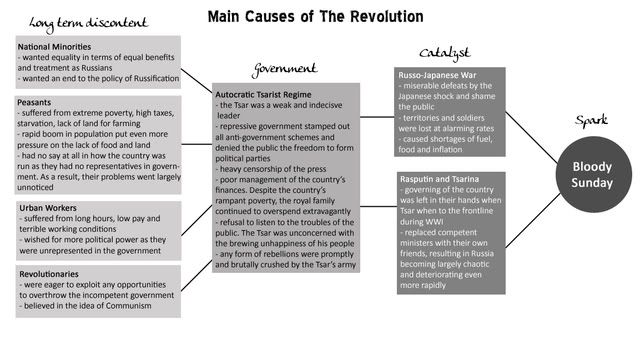
After the Revolution
Political Situation
A Communist state that strongly resembled dictatorship, as the Bolsheviks believed that it was more efficent to have one leader ruling the entire country instead of a whole cabinet. It was a proper government, and elections were held to give the people the freedom to elect the people they supported. There was no doubt more equality in the new policies that were made, and elections were held to give the people the freedom and authority to vote for the party that they believed would represent themselves well. However, after some time, the government started practising extremeism acts like destroying any opposing parties or savagely crushing any protestors or demonstrators.
Economic Situation
Improved greatly, as the government began paying off its foreign debts and started to industrialize the country. Industrialization took place at an unprecedented speed and soon, Russia was beginning to bounce back from the financial difficulties that the war had landed them in. Factories were built and goods were rapidly produced and shipped off to foreign countries. Land was redistributed to give each farmer a sufficient plot of land to grow his crops in, and hence, harvest yields increased and the economy slowly began to get back on track.
Social Situation
Equality was given to every citizen, regardless of ethnicity. The idea of Communism was put in place, and for a short time, the people were content with the rights and treatment that they were being given. Minorities were no longer put under Russification, and were allowed to live the way they were. The peasantry, especially, had more of a say in the government, as they were allowed to elect whichever party they supported into the government.
Ideology
Communism. Communism promised equality for all, regardless of differences. It was the complete opposite of meritocracy in the way that everyone earned the same amount of money regardless of how hard they worked, what social class they came from, what religion they practised. Communism was extremely different from autocracy in the way that it gave power to the people - even the government was considered equal to the peasants, in terms of social class. Communism promised a classless society, where everyone from nobles to peasants were of the social standing, thus promising equality and equal representation in the government in the form of elections (peasants were allowed to vote) and a parliament.
Concept of a Political Revolution
A revolution can basically be broken down into 3 main stages:
Stage 1: Incubation Stage
This stage entails the brewing discontent of the people and the further deepening resentment of the country.
Before the Russian Revolution, this stage would probably be when the people were feeling neglected by their Tsar as further poverty claimed them, when they were feeling deeply resentful towards Rasputin and the wayward Tsarina.
Stage 2: Symptomatic Stage
As the unrest continues to brew, the crowds begin to take action by calling for minor demonstrations demanding attention to their interests. During this time, revolutionaries begin to emerge, often encouraging the people to voice their problems and make their opinions known.
This stage during the Russian Revolution would be the demonstration during Bloody Sunday, where the people felt compelled by Father Gapon to go to the Tsar and make known their various problems and deeply-rooted unhappiness.
Stage 3: Crisis Stage
The climax of the entire process peaks here, where the actual revolution occurs. Drastic changes occur here, often with much violence and bloodshed, resulting in the establishment of a brand new society.
This stage would be the Russian Revolution of 1917 itself, when the Tsar was forced to advocated and a new government was put in his place.
